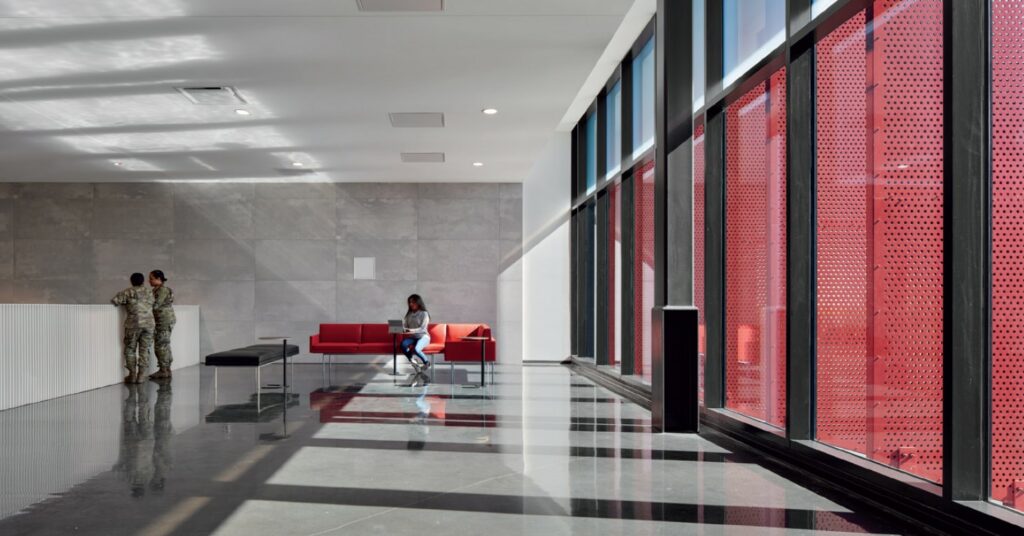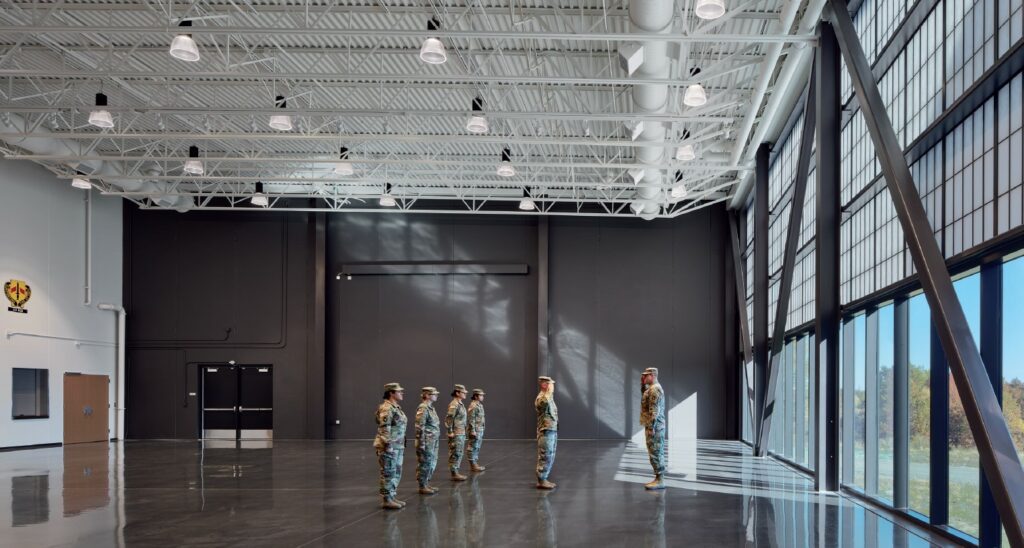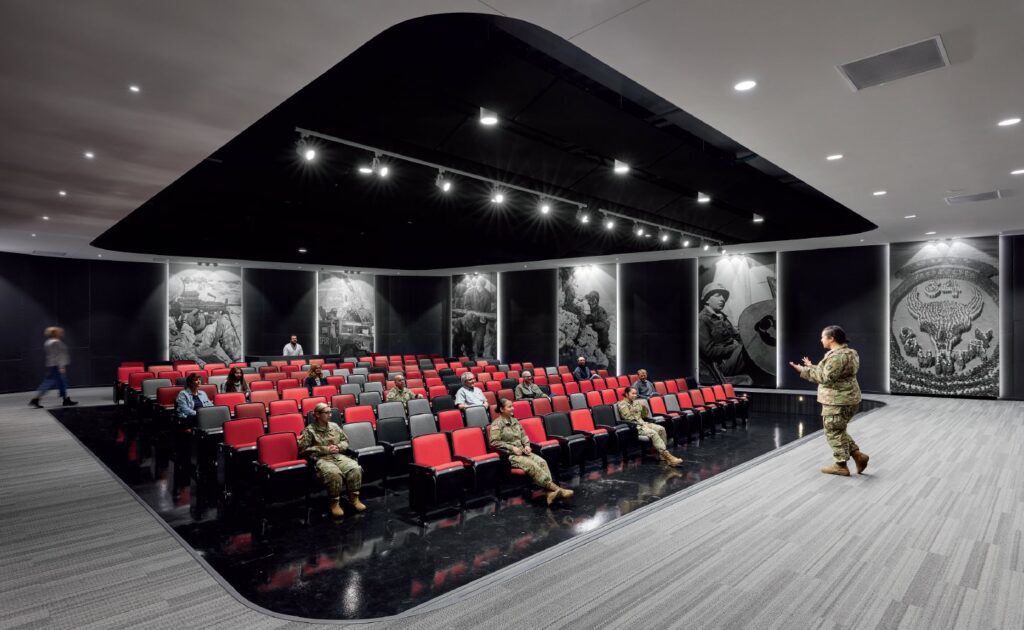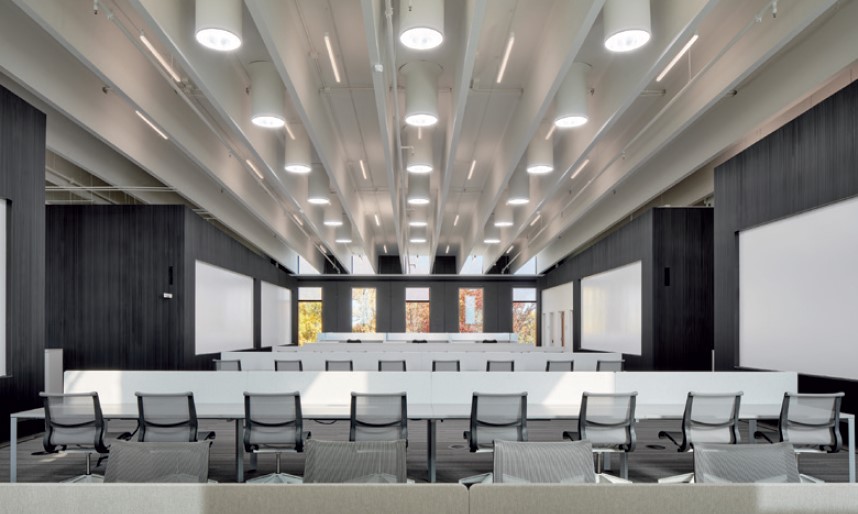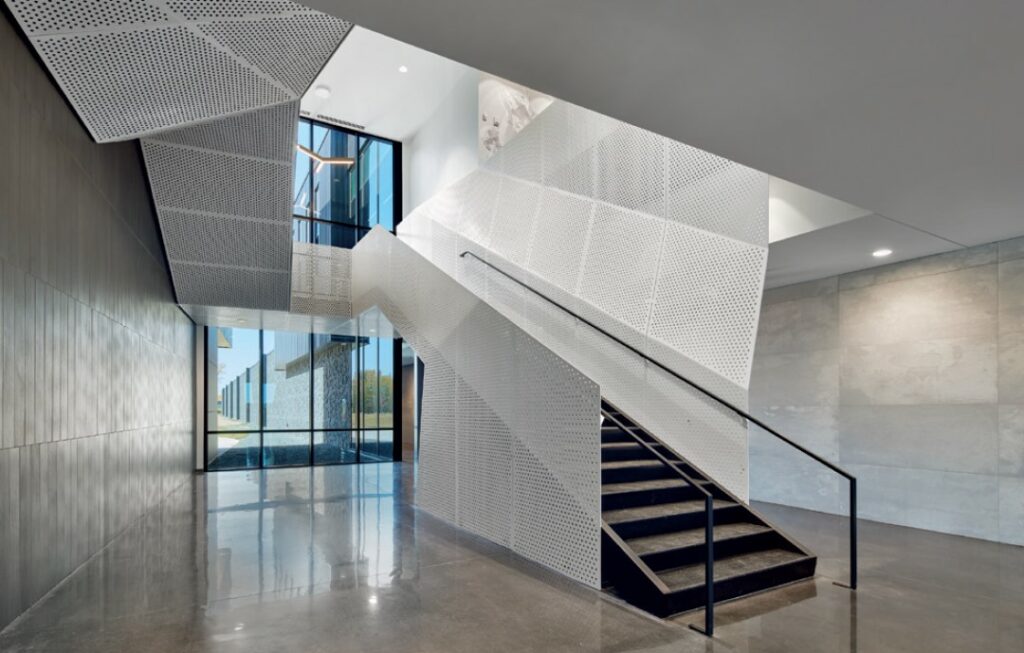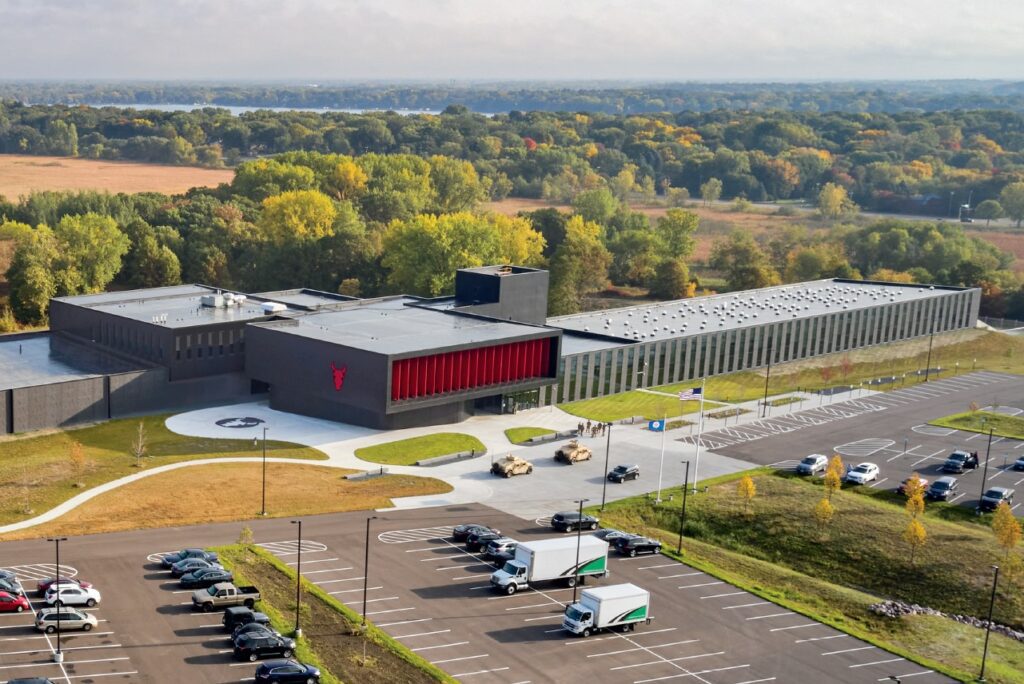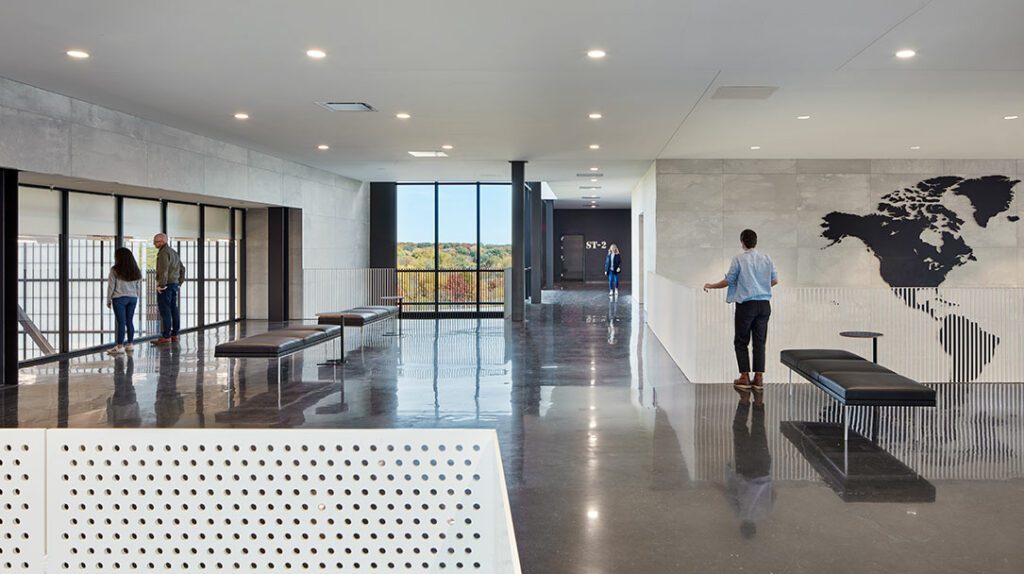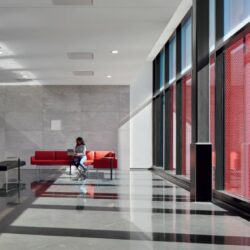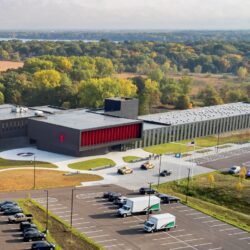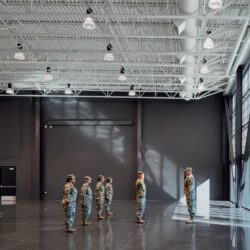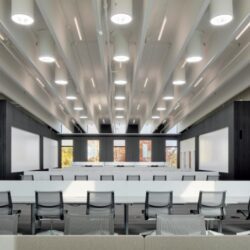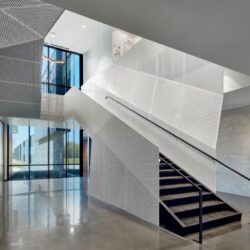Earlier this year, Daylight Specialists was pleased to be the distributor and installer of Solatubes at the National Guard Readiness Center in Arden Hills, MN. Below you’ll find an article from ENTER MN, a publication of AIA Minnesota, demonstrating how daylighting has contributed to the buildings goal of LEED certification and the overall satisfaction and appeal of this facility.
TEXT BY CHRIS HUDSON, PHOTOS BY GAFFER PHOTOGRAPHY
The Army National Guard armories of old are now called readiness centers for a very good reason: Members of the Guard need to be prepared to respond nearly instantaneously to crises ranging from natural disasters to cyber warfare to international military conflicts. The new home for the 34th Infantry Division—the famed Red Bulls—in Arden Hills, Minnesota, raises the bar for larger readiness centers across the country.
The 150,000-square-foot facility, designed by the Minneapolis office of Leo A Daly, takes the form of a two-story central hub flanked by long, one-story wings, set in a landscape of rolling hills with wetlands and mature trees. The administrative wing stretching to the east is a daylit, state-of-the-art workplace for full-time personnel; the opposite wing houses the Guard’s immense logistical needs, including equipment storage and distribution.
Efficiency and resilience were design drivers throughout the project. The entrance atrium, drill hall, and classrooms at the core of the facility all flex for different uses, and the design team let structure serve as finish material where possible, for durability and savings; insulated precast wall panels were simply painted on the interior, for example, and concrete floors polished. The resilient design is on course for LEED Gold certification thanks in part to a photovoltaic array, a geothermal well field below surface parking, and advanced stormwater management.
“We wanted to establish a new approach to readiness center design—not necessarily a prototype but a guide for the Guard as they try to address the same challenges over and over in design and construction. Constraints that aren’t going to change are their desire to be extremely efficient with the funding, the need for dramatic fluctuation in capacity, and the fact that their mission is constantly changing in terms of what units are housed in a facility and what the personnel count might be. We wanted to put tools in their toolbox for the future.”
LEO A DALY ARCHITECT LINN BJORNRUD, AIA
“It’s by far the nicest National Guard facility across the U.S. that I’ve been in. Not only the aesthetic part but also in the way it’s planned. The central assembly and training area is designed for maximum flexibility, with the drill hall doubling as the dining area, for example, and the large classroom above the auditorium being highly reconfigurable. The administrative wing has additional classrooms and collaboration spaces, and the supply wing is set up very well to handle all the logistical ins and outs efficiently.”
MINNESOTA ARMY NATIONAL GUARD MAJOR TIM GRINDE
“Day-to-day, the facility is home to less than 60 full-time personnel. On a training weekend, there may be more than 700 people in the building. Creating a facility that can adapt to that much fluctuation was a significant challenge. The occupancy is always changing, the personnel is always changing. We know that the Guard adapts continuously and rapidly to respond to a crisis. We needed to ensure their headquarters facility exhibits that same ability to flex and adapt.”
LEO A DALY ARCHITECT LINN BJORNRUD, AIA
- Restrained use of the Red Bulls’ brand color in vertical sunshades above the entry and in interior furnishings enlivens the facility inside and out.
- An aerial view reveals the dozens of tubular skylights in the roof of the administrative wing.
- The highly adaptable drill hall/dining area enjoys wide views of the surrounding landscape.
- In the much-used auditorium, the latest presentation technology pairs with large black-and-white photo panels.
- Tubular skylights provide most of the illumination needed for a flexible meeting space/classroom in the administrative wing.
- A sculpturally faceted open staircase in the central hub encourages Guard members to take the stairs.
© 2022 ENTER MN, a publication of AIA Minnesota. Photos by Gaffer Photography. Published with reprint rights, ALA Minnesota retains copyright to all materials.
